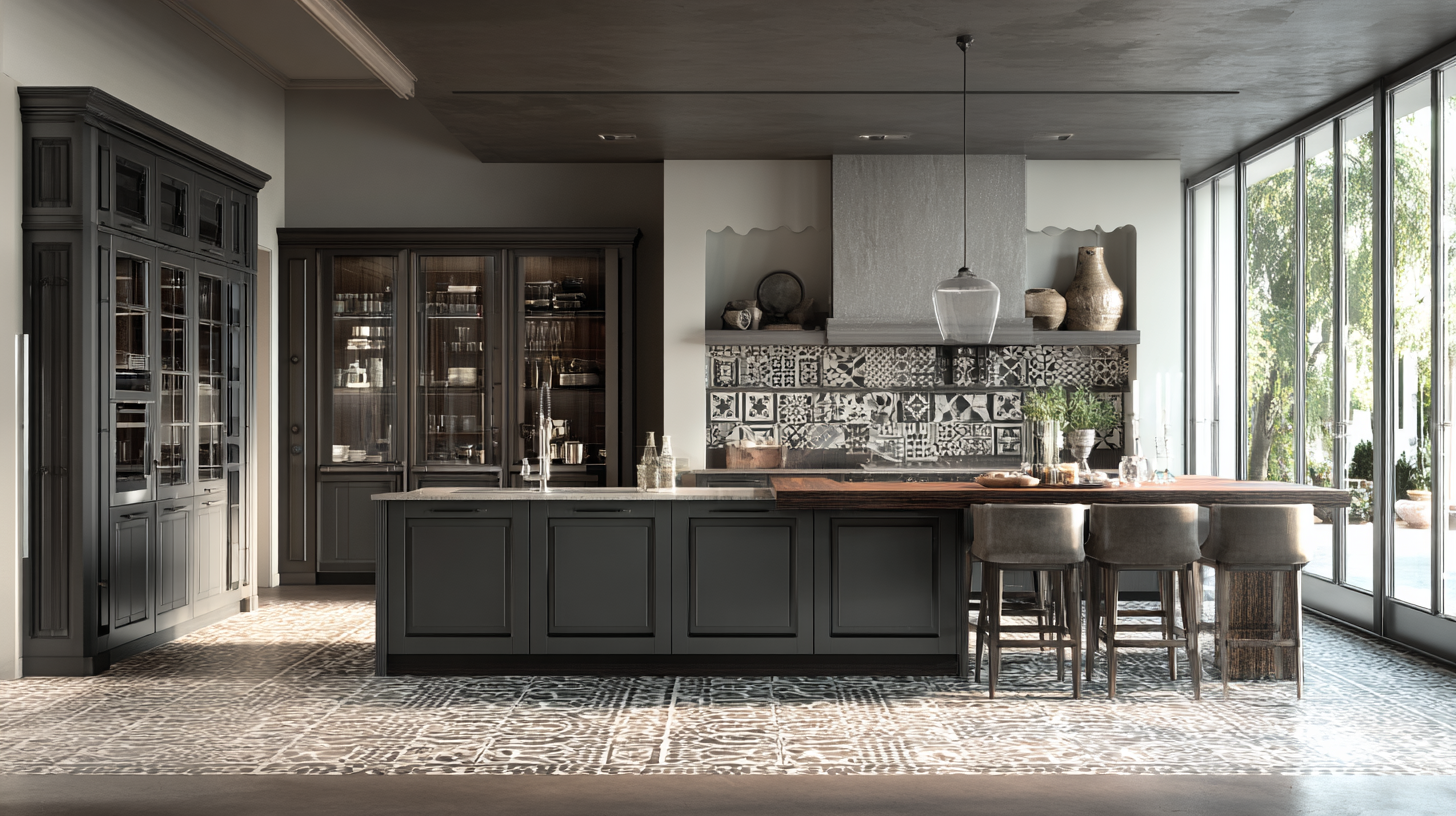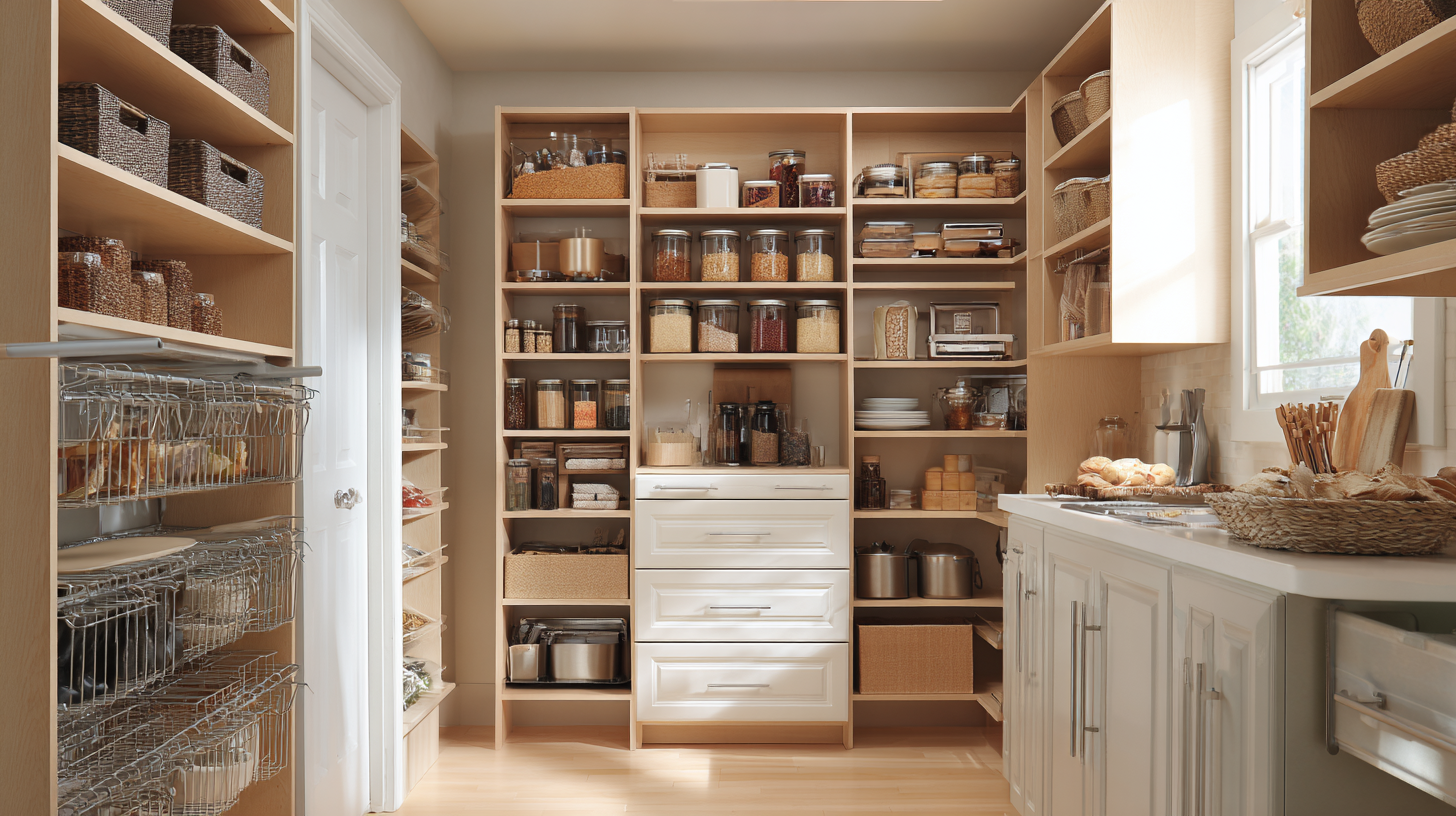7 Essential Tips for Choosing the Best Kitchen Closets for Your Home
When it comes to home organization and maximizing space, kitchen closets play a pivotal role in creating a functional and aesthetically pleasing environment. According to the National Kitchen and Bath Association (NKBA), 55% of homeowners prioritize efficient storage solutions when renovating their kitchens. With an average cost of kitchen renovations reaching up to $25,000, investing in the right kitchen closets can significantly enhance both the practicality and value of your home. However, many homeowners face challenges in selecting the best options that meet their specific needs while adhering to industry production standards. From material selection to design choices, understanding the dynamics of kitchen closet functionalities is crucial for making informed decisions. In this blog, we will explore seven essential tips to help you navigate the complexities of choosing the best kitchen closets for your home, ensuring optimal use of space and alignment with your lifestyle.

Key Trends in Kitchen Closet Design for 2025: What to Expect
As we look ahead to 2025, kitchen closet design is set to embrace a range of innovative trends that will revolutionize how we view this essential space. One of the most significant trends will be the integration of smart technology into kitchen closets. With smart organization systems, homeowners can track inventory, suggest recipes based on available ingredients, and even connect to grocery delivery services. This tech-savvy approach not only enhances convenience but also promotes more personalized and efficient kitchen management.
Another key trend will be the emphasis on sustainable materials and eco-friendly designs. Consumers are becoming increasingly conscious of their environmental impact, and this is reflected in their choice of kitchen furnishings. Expect to see more kitchen closets made from renewable resources and featuring finishes that are low in volatile organic compounds (VOCs). Additionally, modular designs that allow for customization will gain popularity, as they offer both flexibility and aesthetic appeal. These elements together will create a kitchen space that is not only stylish but also functional and environmentally responsible.
Evaluating Space Requirements: How to Measure Your Kitchen for Closets
When selecting kitchen closets, accurately measuring your available space is crucial for a successful fit. Begin by clearing the area where the closets will be installed, ensuring there are no obstacles that could affect your measurements. Use a tape measure to obtain the width, height, and depth of the designated spaces, taking into account any architectural features such as windows, doors, or existing appliances. Remember to measure multiple times to confirm your figures, as even a small miscalculation can lead to significant issues during installation.

Additionally, consider the overall layout of your kitchen. Think about how the closets will interact with other elements, such as countertops and islands. Pay attention to the height of your ceilings, as this can affect both the style and functionality of the closets you choose. Lastly, don’t forget to account for the opening space needed for doors or drawers; ensuring easy access and usability should be at the forefront of your planning. With meticulous measurement and thoughtful layout design, you can create a harmonious and efficient kitchen space that meets your storage needs.
Material Matters: Choosing the Right Finishes for Durability and Style
When it comes to selecting the best kitchen closets for your home, the choice of material plays a pivotal role in both durability and style. Opting for high-quality finishes not only enhances the aesthetic appeal of your kitchen but also ensures that your closets can withstand the rigors of daily use. Solid wood remains a popular choice for its timeless elegance and resilience, capable of dealing with temperature fluctuations and wear over time. For those seeking a more modern look, materials like MDF or plywood with laminate finishes offer a balance of durability and contemporary style, providing a versatile option for any kitchen design.

In addition to wood and engineered materials, the hardware and finish you select also contribute significantly to the overall longevity and look of your kitchen closets. Stainless steel and brushed nickel fixtures are not only stylish but also resist tarnishing and corrosion, making them ideal for a kitchen environment. On the other hand, a soft-close mechanism in drawer slides and cabinet doors adds an element of luxury while prolonging the life of your cabinetry by minimizing the risk of wear and tear. By carefully considering these material and hardware options, you can create kitchen closets that are as functional as they are beautiful, reflecting your personal style while standing the test of time.
Customization Options: Tailoring Kitchen Closets to Your Unique Needs
When selecting kitchen closets, customization options are essential to tailor storage solutions that will meet your unique needs. Every kitchen is different, and what works for one may not suit another. This is why it’s crucial to consider features such as adjustable shelving, pull-out drawers, and specialized compartments for utensils, pots, and pans. Custom features allow you to utilize every bit of space efficiently, ensuring that your kitchen remains organized and functional.
Furthermore, the materials and finishes of the closets can also be personalized to reflect your style. From selecting the right cabinetry that complements your overall kitchen decor to choosing colors that enhance the ambiance, customization plays a key role in achieving a cohesive look. Additionally, integrating smart storage solutions, such as hidden racks or corner cabinets designed for easy access, can drastically improve your kitchen's usability. Prioritize customization as a step towards creating a kitchen that is not only aesthetically pleasing but also perfectly aligned with your lifestyle needs.
7 Essential Tips for Choosing the Best Kitchen Closets for Your Home - Customization Options: Tailoring Kitchen Closets to Your Unique Needs
| Tip | Description | Customization Options | Benefits |
|---|---|---|---|
| Assess Your Space | Measure your kitchen and consider the layout. | Custom dimensions | Maximizes storage efficiency |
| Define Your Style | Choose a decor style that complements your home. | Finish options: matte, gloss, wood grains | Enhances aesthetic appeal |
| Consider Storage Needs | Identify what items you need to store and access regularly. | Adjustable shelving, pull-out drawers | Improved organization & accessibility |
| Choose the Right Materials | Select materials that suit your budget and lifestyle. | Plywood, MDF, solid wood options | Durability and longevity |
| Incorporate Lighting | Ensure your kitchen is well-lit for functionality. | Under-cabinet lighting, smart lighting solutions | Enhances visibility and ambiance |
| Plan for Accessibility | Design closets that are easy to reach for everyone. | Pull-down shelves, lazy Susans | Inclusive design for all users |
| Think About Future Needs | Anticipate changes in your lifestyle or family size. | Modular systems that allow for expansion | Adaptability over time |
Budgeting Wisely: Cost-Effective Solutions for High-Quality Kitchen Closets
When it comes to selecting the ideal kitchen closets for your home, budgeting wisely is paramount. According to a recent report by the Joint Center for Housing Studies, kitchen remodels can recoup about 80% of their costs when it comes time to sell. This statistic highlights the importance of investing in quality without overspending. By prioritizing durable materials and efficient designs, homeowners can achieve a high-end look for less. For instance, opting for melamine or thermoplastic finishes can reduce costs while still providing a polished appearance.
Cost-effective solutions for kitchen closets also involve strategic planning. The National Kitchen and Bath Association suggests that homeowners allocate about 15-20% of their total kitchen budget to cabinetry. This means that for a $15,000 renovation, you'd ideally spend around $3,000 to $3,000 on quality closets. Investing in modular closet systems can be an excellent way to maximize storage while staying within budget. These systems often come with customizable options, allowing homeowners to tailor their closet spaces to fit their specific needs, ultimately enhancing both functionality and style without breaking the bank.

